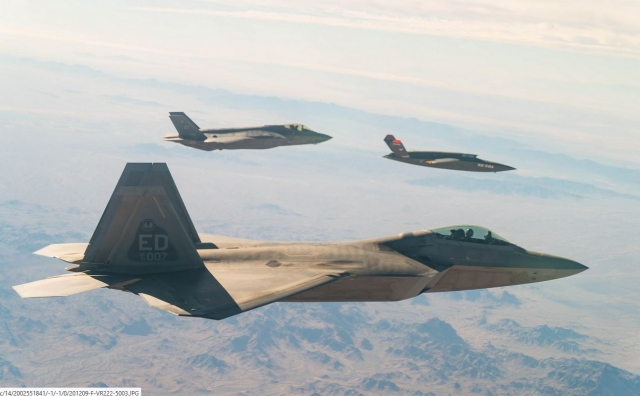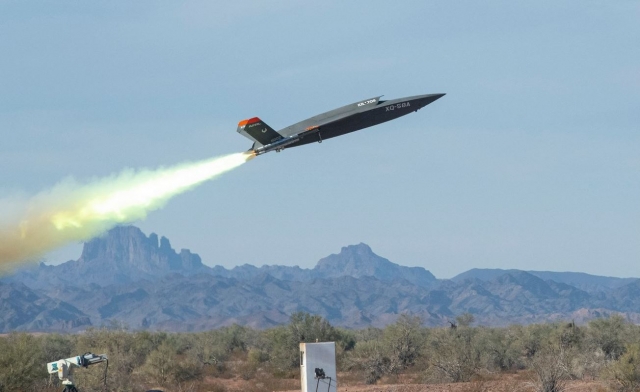5th gen tests within the USAF
On 9 December 2020, a US joint force took another step toward linking the F-22As Intra-Flight Data Link (IFDL) and the F-35s Multifunction Advanced Data Link (MADL) on different frequencies and software with a gatewayONE. Technicians of the force were able to establish a secure two-way Advanced Battle Management System translational data path between both platforms. It was planned to fit also an attritableONE platform Krotos XQ-58 Valkyrie in the link, but the hardware of the Unmanned Aerial System / loyal wingman failed after take-off.
The fifth-generation link, named military Internet of Things, overcame long standing connectivity limitations to share actionable operational data in their native secure digital “languages” with and through multiple sources for the first time.
The primary tests took place at Yuma Proving Ground (AZ) with preparatory tests that started from Nellis Air Force Base (NV). It is reported that nine out of eighteen test objectives were and successfully achieved. “Testing is all about pushing the limits of what’s possible, finding out where the toughest challenges are, and adapting creative solutions to overcoming difficult problem sets,” as Lt. Col. Kate Stowe, gatewayONE program manager at the Air Force Lifecycle Management Center said. “The real win of the day was seeing the gatewayONE establish a secure two-way translational data path across multiple platforms and multiple domains. That’s the stuff ABMS is all about.”
Fifth-generation fighters are typically limited to communicating with each other and to command and control centers via legacy tactical data connections, not in their native, but incompatible digital “languages” – Multifunctional Advanced Data Link for F-35 and Intra-Flight Data Link for the F-22. Not only can gatewayONE translate between those formats, in this test it moved data that is normally relegated to an operations center or tactical ground node, directly pushing it into the cockpit at the edge of the multi-domain battlespace for the first time.
Additionally, the test pushed the position data of each platform outside of the aircraft’s close-proximity formation through gatewayONE, which enables battle managers on the ground or in the air to better orchestrate operations. The gatewayONE payload also passed tracks or cues from ground operators to both fighters and passed a cue from the F-35A to the F-22 for the first time. These bi-directional communications pathways occurred in the platforms’ native digital “languages” and the data was displayed through the aircrafts’ organic systems.
“The gatewayONE payload really showed what’s possible and helped us take a big step towards achieving (Joint All-Domain Command and Control),” said Lt. Col. Eric Wright, a 59th Test and Evaluation Squadron F-35 pilot. “This critical capability provides additional connections between our advanced fighters and other forces and battle managers across all domains. The future is promising, and gatewayONE will allow the F-22 and F-35 to connect to and feed data sources they've never before accessed. Those future connections will bring additional battlefield awareness into the cockpit and enable integrated fires across U.S. forces.”
Additional successful tests included establishing a communications pathway between the KC-46A Pegasus tanker and a ground node using commercial internet routing standards over the Tactical Targeting Network Technology waveform and the F-35B sending full-motion video to a ground controller.
The 9 December flight test included the XQ-58A (serial 15-8002 of the Air Force Research Laboratory). The rocket-launched Valkyrie successfully conducted a semi-autonomous flight alongside the F-22A (serial 91-4007/ED of 411th Flight Test squadron) and a F-35A for the first time. The gatewayONE payload was integrated into the Valkyrie for its maiden voyage with the fifth-generation fighters to conduct an initial test of gateway capabilities from an attritable platform; however, shortly after takeoff, the communications payloads lost connectivity and those test objectives were unable to be accomplished.
Photo by USAF Tech. Sgt. James Cason




